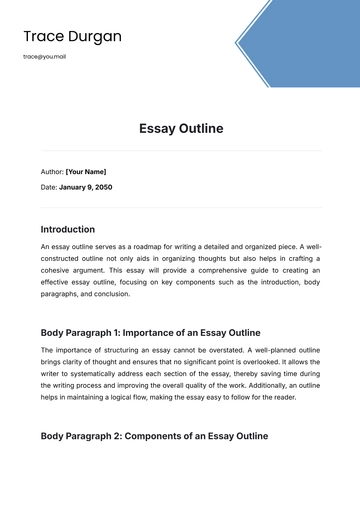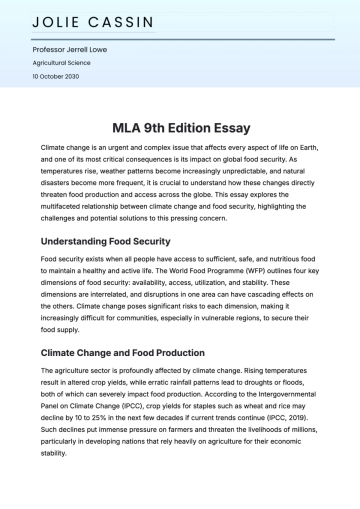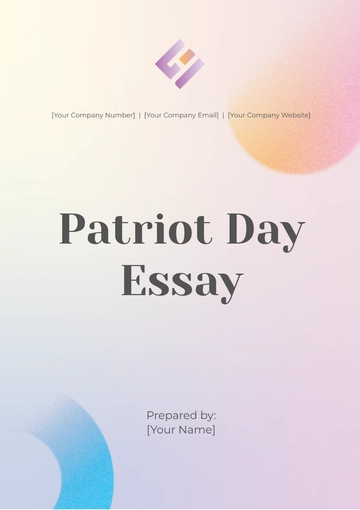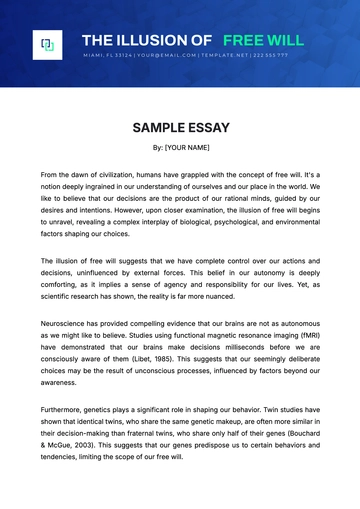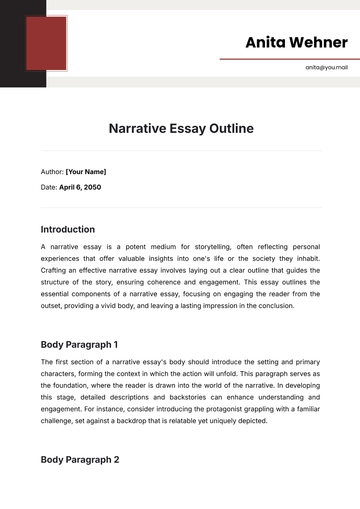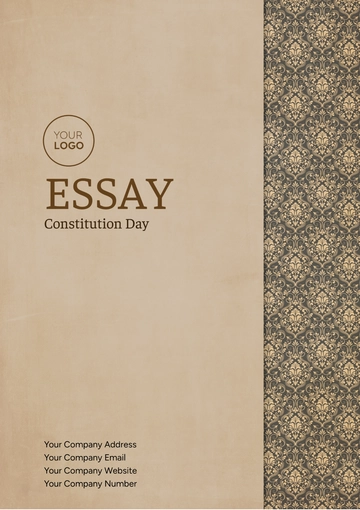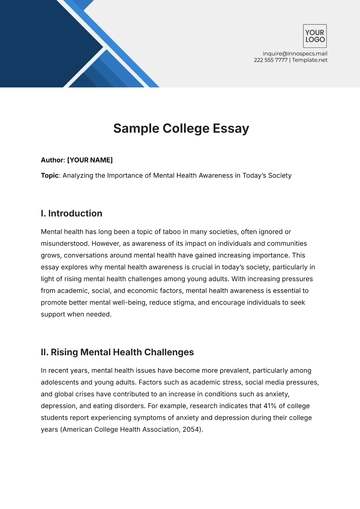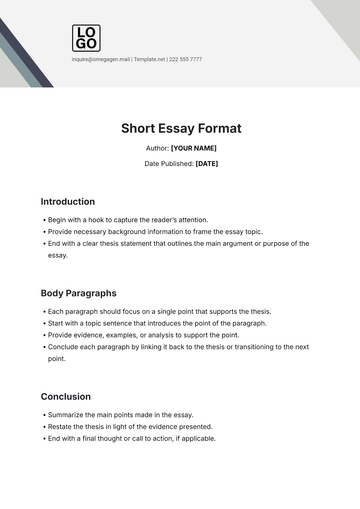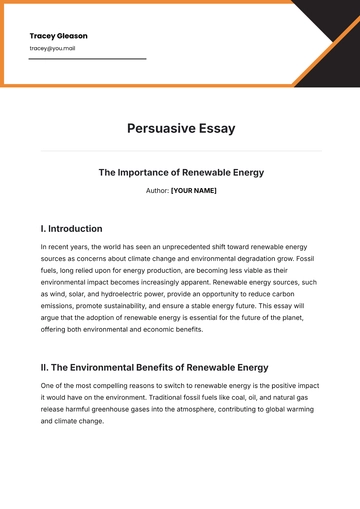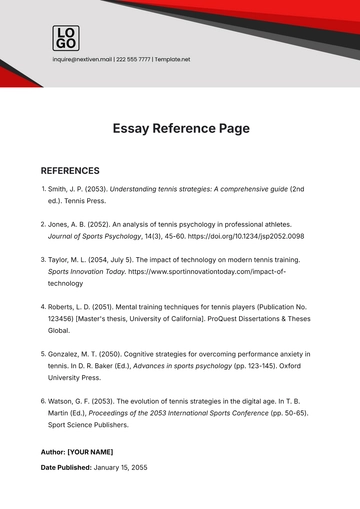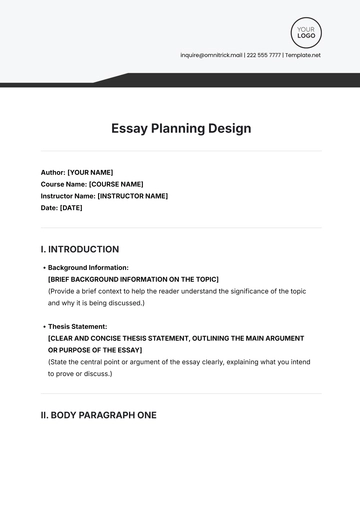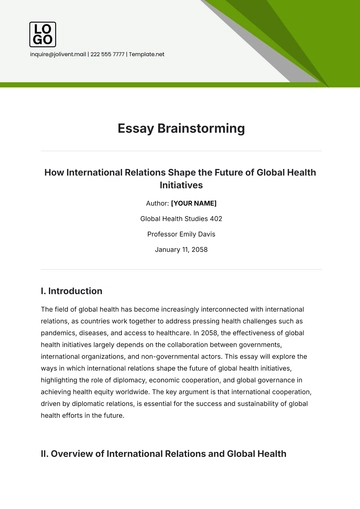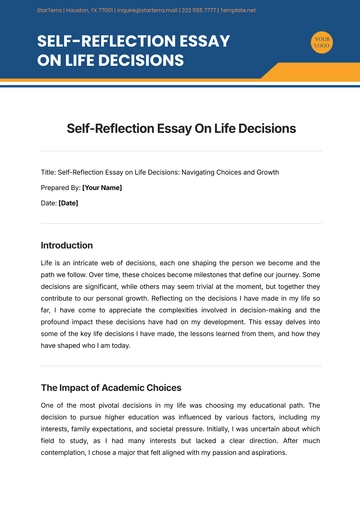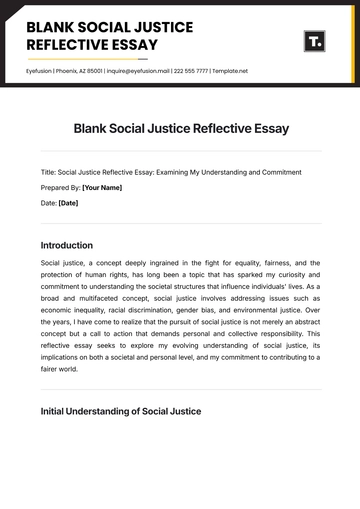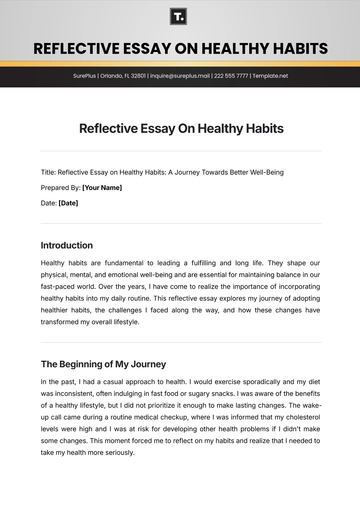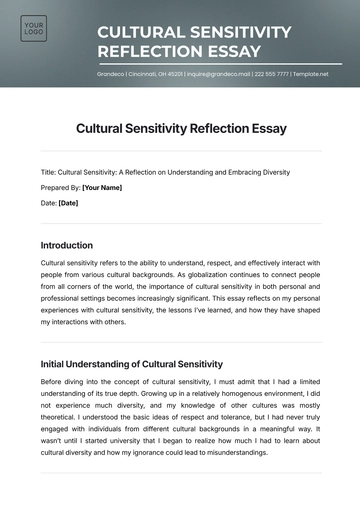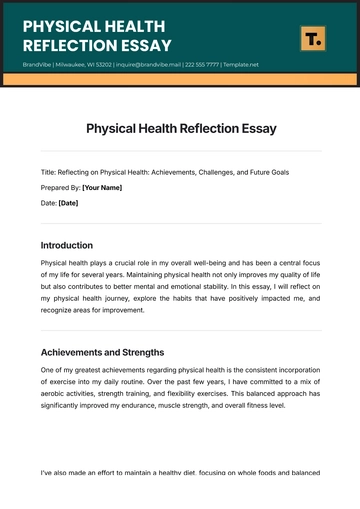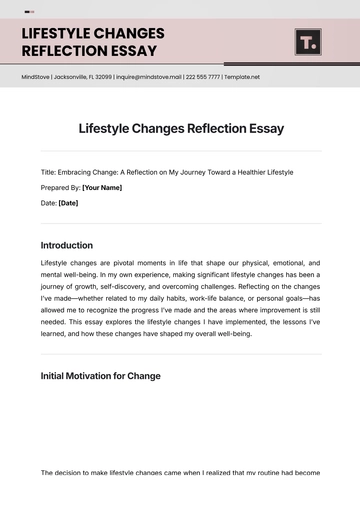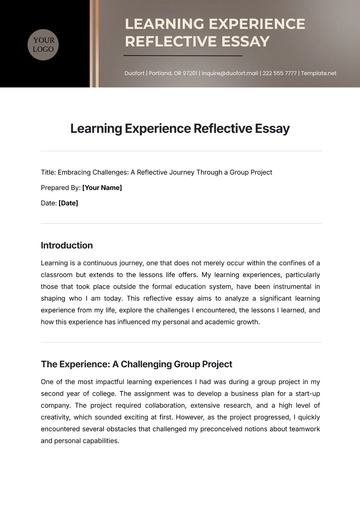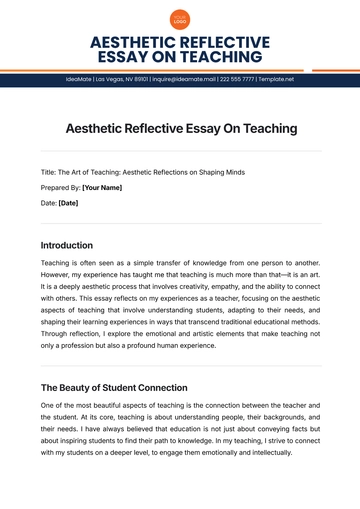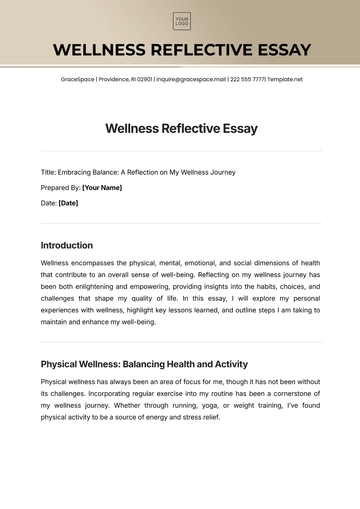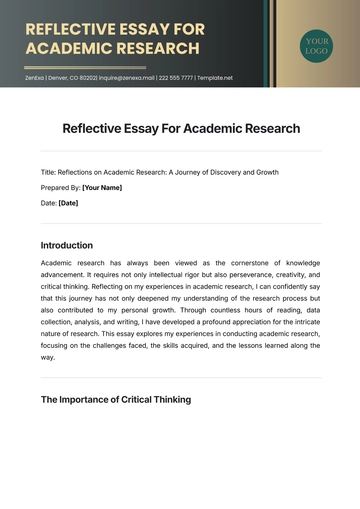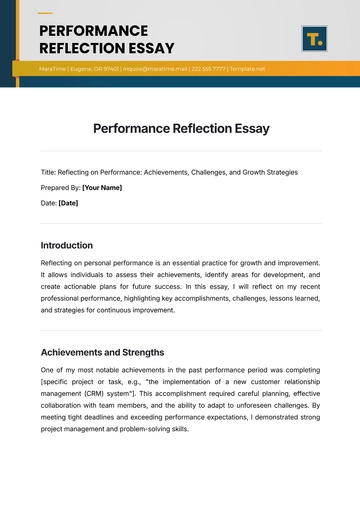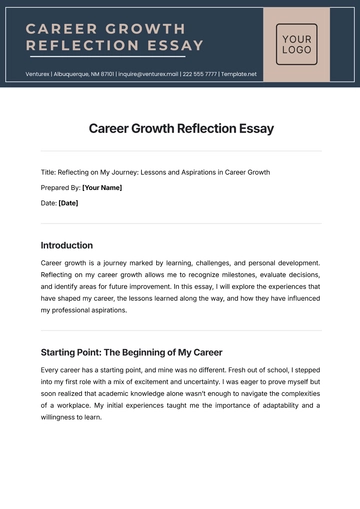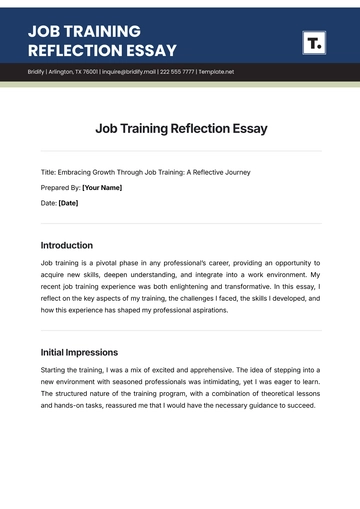Free APA Style Essay
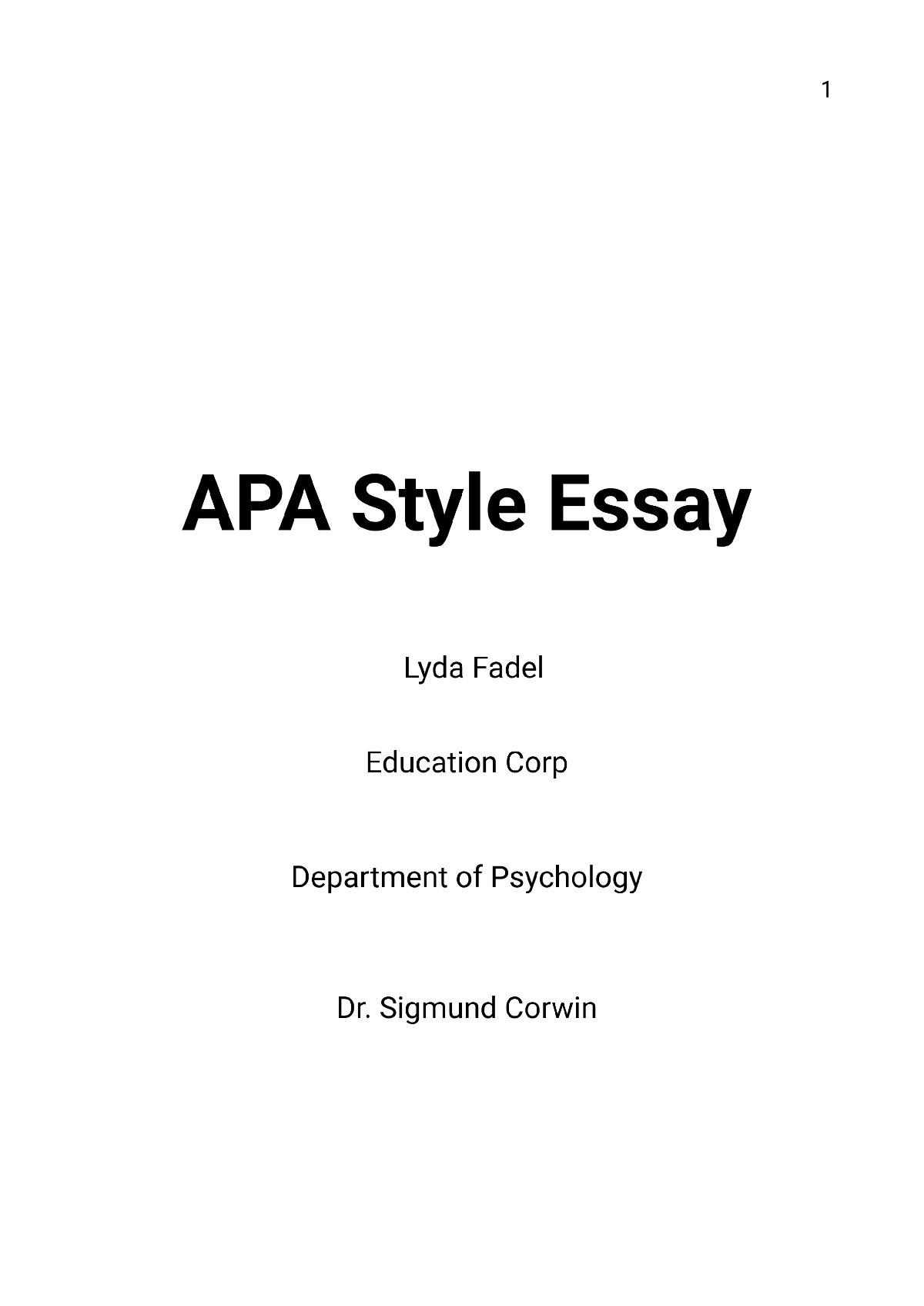
The Impact of Social Media on Adolescent Mental Health
Author(s): [YOUR NAME]
Institutional Affiliation: [YOUR COMPANY NAME]
Course Name: PSY 201 - Introduction to Psychology
Instructor Name: Dr. Samantha Johnson
Date: January 10, 2025
Abstract
This essay explores the impact of social media on adolescent mental health. The purpose of this paper is to examine how the increased use of platforms such as Instagram, TikTok, and Snapchat affects adolescents' self-esteem, anxiety, and overall psychological well-being. It draws from various sources to discuss the correlation between social media use and mental health outcomes in adolescents. Key findings include a significant link between social media use and heightened levels of anxiety and depression, with particular emphasis on body image issues. The essay also provides recommendations for mitigating these negative effects through education and parental involvement. The significance of understanding the impact of social media on adolescent mental health is discussed in relation to improving mental health outcomes and creating healthier online environments for young people.
I. Introduction
The topic of social media’s impact on adolescent mental health has garnered attention in recent years due to the increasing use of platforms by young people. In particular, the rise of visual-based platforms such as Instagram and TikTok has led to concerns about how these platforms shape adolescents' perceptions of themselves and their mental well-being. This essay will examine the psychological effects of social media on adolescents, particularly in relation to issues like self-esteem, anxiety, and depression. It will explore existing research on the subject and provide an analysis of how these platforms influence adolescent development. Additionally, the paper will discuss potential strategies for mitigating the harmful effects of social media use on young people’s mental health.
II. Background
Understanding the relationship between social media and adolescent mental health requires examining the history of social media platforms and their rapid growth. Initially designed for social interaction, platforms like Facebook, Instagram, and Snapchat have evolved to become central parts of young people's lives. The introduction of "likes," filters, and user-generated content has significantly changed the way adolescents interact with each other and with their own self-image. Research by Smith et al. (2070) highlighted that adolescents spend an average of 3 to 4 hours per day on social media, with many reporting feelings of inadequacy after viewing idealized images of others online. This increased screen time has contributed to concerns over its potential negative effects on mental health, especially in relation to anxiety and depression.
III. Key Findings
Research into the impact of social media on adolescent mental health has revealed several key findings:
Increased Anxiety and Depression: A study by Johnson and Patel (2071) found that adolescents who spent more than three hours per day on social media were more likely to report symptoms of anxiety and depression. Social comparison, particularly in relation to physical appearance, was identified as a major factor contributing to these mental health issues. Adolescents frequently compare themselves to idealized images of influencers, which can lead to feelings of inadequacy and lower self-esteem.
Body Image Issues: A significant body of research suggests that social media exacerbates body image issues among young people. According to Williams (2072), nearly 70% of adolescent girls report that social media platforms, especially Instagram, negatively affect their body image. The pressure to conform to beauty standards perpetuated by influencers and celebrities can lead to dissatisfaction with one's own appearance and an increase in disordered eating behaviors.
Cyberbullying: Another significant finding is the correlation between social media use and the prevalence of cyberbullying. A study by Brown and Harris (2071) found that 40% of adolescents reported being victims of cyberbullying on social media platforms, which has been linked to both short-term and long-term mental health problems, including anxiety and suicidal ideation.
IV. Implications
The implications of these findings are far-reaching. The connection between increased social media use and mental health problems suggests that these platforms may be contributing to a public health crisis. As social media use continues to rise among adolescents, it is important to address how these platforms influence mental well-being. For example, the pressure to maintain a curated, idealized online persona can significantly impact adolescents’ sense of self-worth. Additionally, the normalization of unrealistic beauty standards can have long-lasting effects on body image and self-esteem.
Adolescents are at a critical developmental stage, and social media may have a lasting impact on their psychological health. Given the prevalence of cyberbullying, efforts should be made to educate adolescents about the risks of online harassment and promote strategies for managing negative interactions.
V. Recommendations
Based on the findings presented, several recommendations can be made to mitigate the negative effects of social media on adolescent mental health:
Education on Digital Literacy: One recommendation is to implement digital literacy programs in schools that focus on the psychological impacts of social media. These programs could teach adolescents about the dangers of social comparison, the risks of cyberbullying, and how to critically evaluate content online. Educating young people about the reality of "Instagram filters" and edited images could help reduce body dissatisfaction and prevent mental health issues related to self-image.
Parental Involvement: Another recommendation is for parents to become more involved in monitoring their children's social media usage. While respecting privacy, parents can help guide their children toward healthier online habits, such as setting time limits and discussing the emotional impacts of online interactions. Studies have shown that adolescents with active parental engagement in their digital lives have lower rates of social media-induced anxiety.
Platform Accountability: A longer-term recommendation is for social media companies to take more responsibility in addressing the mental health risks associated with their platforms. This could include developing features that alert users to excessive usage and introducing algorithms that prioritize mental health content over idealized imagery. Platforms could also work with mental health professionals to create tools that help users identify and manage negative emotions triggered by online content.
VI. Conclusion
In conclusion, the impact of social media on adolescent mental health is a critical issue that requires attention from parents, educators, and policymakers. Through an examination of current research, this essay has shown that there is a strong correlation between social media use and increased anxiety, depression, and body image issues in adolescents. While social media platforms have the potential to provide positive opportunities for connection and expression, their negative effects cannot be ignored. By promoting digital literacy, parental involvement, and platform accountability, it is possible to mitigate these negative impacts and improve adolescent mental health in the digital age.
References
Brown, J., & Harris, T. (2071). The rise of cyberbullying: A social media crisis. Journal of Adolescent Psychology, 25(3), 245-260.
Johnson, R., & Patel, S. (2071). Social media and adolescent mental health: A growing concern. Psychology Today, 47(5), 67-74.
Smith, L., Williams, P., & Davis, E. (2070). Social media usage and its effects on adolescent mental health: A systematic review. Journal of Child and Adolescent Behavior, 15(1), 1-12.
Williams, D. (2072). Instagram and body image: The impact on adolescent girls. Journal of Youth Studies, 19(4), 34-49.
- 100% Customizable, free editor
- Access 1 Million+ Templates, photo’s & graphics
- Download or share as a template
- Click and replace photos, graphics, text, backgrounds
- Resize, crop, AI write & more
- Access advanced editor
The APA Style Essay Template from Template.net is a fully editable and customizable tool designed for academic writing. Perfect for students and professionals, it offers a streamlined format that adheres to APA guidelines. Use the AI Editable Tool for easy adjustments, ensuring a polished, professional essay every time with minimal effort.

